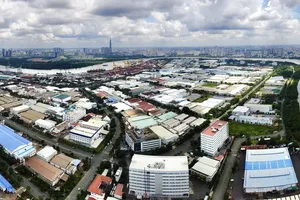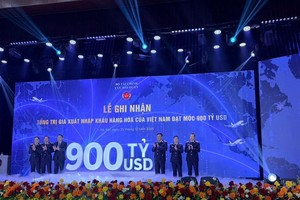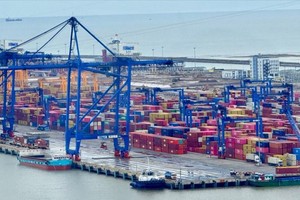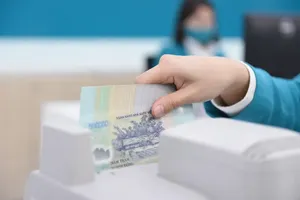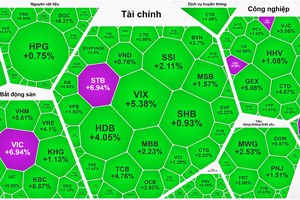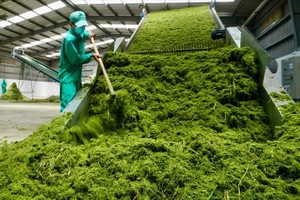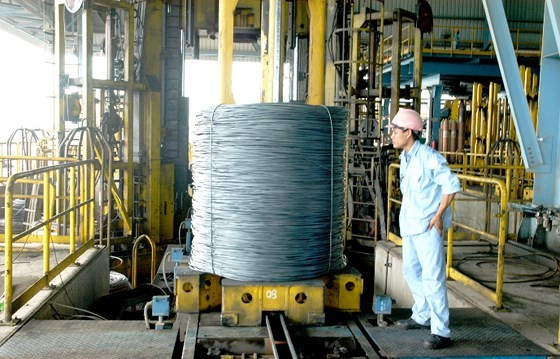
The period from 2014 to 2018 was considered as the heyday of steel industry with average growth of nearly 20 percent per year. During this time, robust growth of steel industry originated from thriving real estate market and domestic subsidies. However, since the beginning of the third quarter of last year, steel industry was expected to be gloomy as domestic market would cope with excess supply while export would face barriers due to trade protectionism.
According to representative of the Vietnam Steel Corporation (VNSTEEL), steel market has experienced several difficulties since mid-2018. Steel prices on global market made unexpected changes. Prices of input materials, including iron ore and coke, continuously fluctuated and were at high levels. Meanwhile, the prices of most products have started to go down, greatly affecting domestic market.
Another reason that led to excess supply was from export market. As currently, around 40 percent of rolled steel was exported. However, trade protectionism increased in 2018 as key export markets of Vietnamese steel, including the US, Thailand and Malaysia, used trade barriers, such as import tariffs on steel products so as to protect local manufacturers. Hereby, export of rolled steel was affected heavily, causing high pressure on Vietnamese steel manufacturers. Particularly, growth rates of steel industry and steel export were 9 percent and 9.6 percent respectively last year, about one third of the levels of 28 percent and 26 percent in 2017.
Many members of VNSTEEL said that steel industry will continue to deal with several challenges and difficulties when protectionism trend is still on increase; the trade war between the US and China will not be ending anytime soon; the prices of input materials continue to be unstable. All these aforesaid factors will negatively affect domestic steel industry. Moreover, with factories of Formosa and Hoa Phat as well as some new projects being put into operation and supply three times higher than demand currently, market share will become smaller and the competition for market share will be more cutthroat.
Recently, countries around the world tend to increase measures to protect domestic industries and the risk of trade conflict among large economies has been threatening many manufacturing industries, of which steel manufacturing and steel products are one of the industries that suffer most.
According to Mr. Nguyen Phuong Nam, deputy head of the Trade Remedies Authority of Vietnam, there were more than 1,500 cases of trade protection in the world, of which steel industry accounted for more than 30 percent. Especially, in the past two years, steel was constantly the subject of investigations to apply safeguard measures with extremely high tariffs. Amid the context, Vietnam’s steel export is facing challenges as imported countries continuously investigate and impose safeguards on made-in-Vietnam steel.
For instance, Vietnam’s cold-rolled coils were imposed anti-dumping tax of up to nearly 200 percent and other taxes up to 250 percent in the US market. Canada levied anti-dumping tax of nearly 100 percent and other taxes of 6.5 percent on this item. Meanwhile, the EU regulated that tariffs of 25 percent will only be imposed once import volume exceeds 3 percent of quota.
Steel products exported to Thailand also suffer anti-dumping tax of up to 310 percent. Corrosion resistant steel (CORE) was imposed anti-dumping tax of nearly 200 percent when exporting to the US. Other large import markets are considering raising tariffs on flat bars of Vietnam.
Export of steel experiences stagnant while domestic demand is much lower than supply, causing pressure on selling price and production of steel. In order to deal with current difficult situation of steel industry, economic experts proposed that the Government should have policies and solutions to control and prevent excessive import of cheap steel from China which seriously damages domestic steel manufacturers.
Besides, the Government should continue to take suitable measures to boost demand and help manufacturers to expand market. In addition, it should promote investment disbursement, focus on key projects, create favorable conditions for firms to access financial source and stimulate demand on real estate market.




